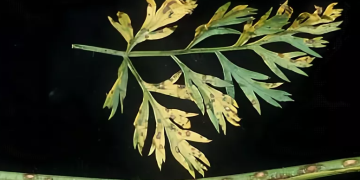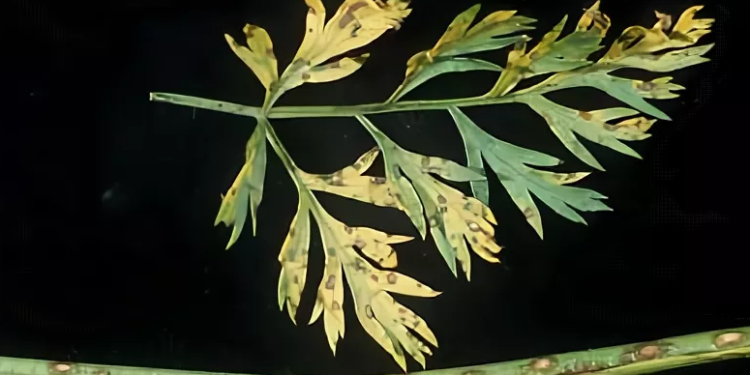plantdisease #fungalpathogen #cropmanagement #alternariafungus #integratedpestmanagement #culturalpractices
Alternaria Leaf Blight is a fungal disease that affects a wide range of plants, including vegetables, fruits, and ornamentals. The disease is caused by the Alternaria fungi, and it typically affects leaves, causing them to become spotted and eventually leading to leaf drop. In severe cases, it can cause significant crop losses.
Symptoms of Alternaria Leaf Blight include brown or black spots on leaves, which may have a yellow halo around them. The spots can merge to form large patches, and the affected leaves may become yellow and wilted. If left untreated, the disease can spread to the stems, flowers, and fruits of the plant.
The development of Alternaria Leaf Blight is favored by warm, humid weather, and the disease can spread rapidly in these conditions. It can also be spread through infected seeds, plant debris, and contaminated soil.
Management of Alternaria Leaf Blight involves a combination of cultural, biological, and chemical control methods. Cultural practices such as crop rotation, removal of infected plant debris, and avoiding overhead irrigation can help prevent the disease. Biological control methods, such as the use of beneficial microorganisms, can also be effective. Fungicides can be used as a last resort, but they should be used judiciously to avoid the development of fungicide-resistant strains of the fungus.
Alternaria Leaf Blight is a serious disease that can have significant consequences for crop production. Early detection and prompt management are key to minimizing its impact. By following good cultural practices and using an integrated pest management approach, growers can effectively manage this disease and protect their crops.
































